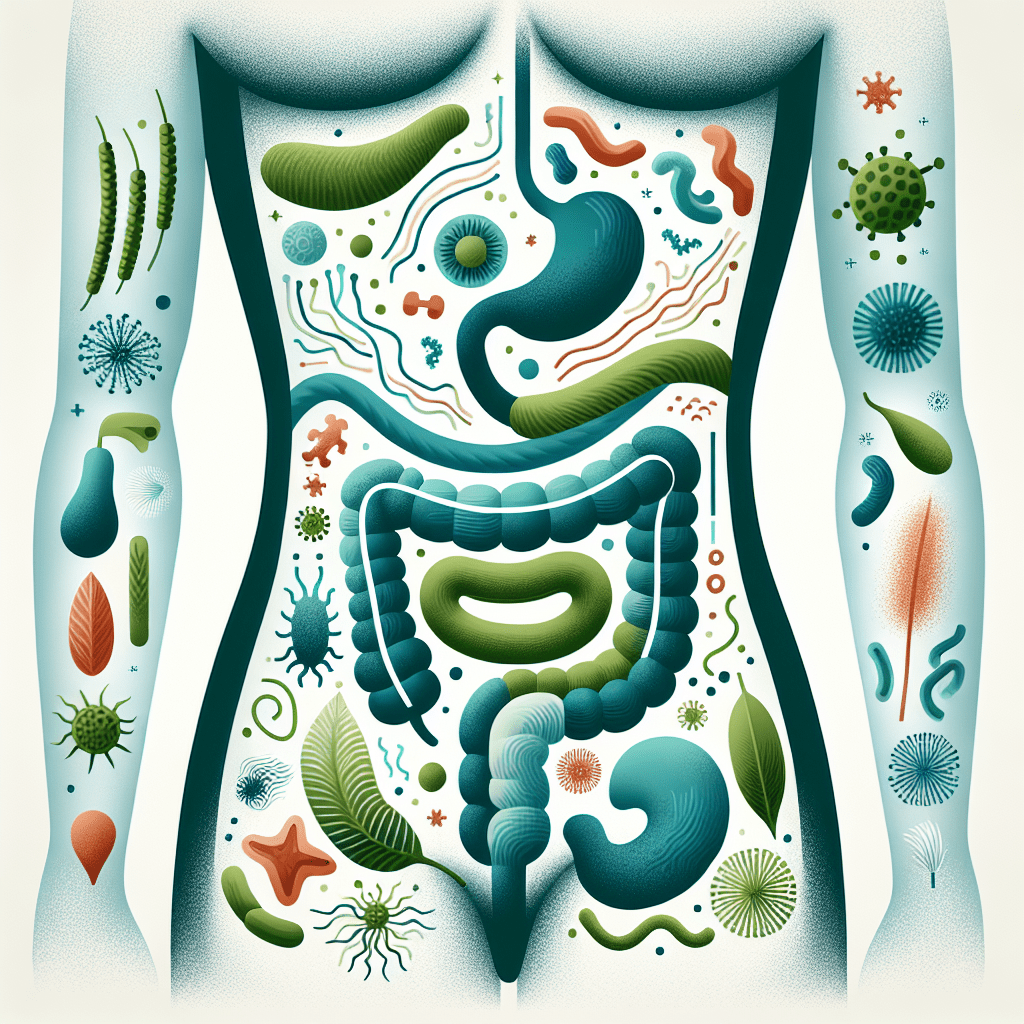
What do intestines dislike?
Maintaining a healthy digestive system is essential for overall health and wellbeing. This blog post explores the key question: "What do intestines dislike?"—by diving into the symptoms, causes, and microbial contributors to gastrointestinal discomfort. It explains common intestines symptoms, such as bloating and irregular bowel movements, and examines how microbiome testing can uncover the root causes of digestive issues. With personalized insights from gut microbiome testing, you can learn what irritates your intestines and discover practical strategies to keep your gut balanced. If you’re experiencing persistent digestive problems, this guide offers valuable information tied to your microbiome health.
Introduction
The human digestive system is a sophisticated, intricate network responsible for breaking down food, absorbing nutrients, and forming a defense against harmful pathogens. At the heart of this system lies the gut microbiome—a dynamic ecosystem of trillions of bacteria, viruses, fungi, and other microbes populating the intestinal tract. This complex microbial community not only helps with digestion but also significantly influences mental health, immunity, metabolism, and even skin conditions.
In recent years, the importance of the microbiome in maintaining health has become increasingly clear. Thanks to cutting-edge advances, gut microbiome testing is now available to consumers, offering personalized insights into intestinal health. By examining microbial composition and diversity, individuals can uncover what their intestines "dislike"—and more importantly, what might be causing chronic symptoms and discomfort.
The purpose of this article is to explore what negatively affects the intestines, how these influences manifest as symptoms and signs, and how individuals can use microbiome testing tools—like the ones available at InnerBuddies—to take informed steps toward a healthier gut. From understanding digestive symptoms and intestinal irritation to tackling inflammation and enhancing colon health, the knowledge shared here empowers you to take control of your gut—and your health.
1. Recognizing Intestines Symptoms Relevant to Gut Microbiome Testing
Understanding the potential signs of gut imbalance is the first step toward improving intestinal health. Many people suffer from chronic gastrointestinal issues but fail to recognize them as intestines symptoms linked to microbiome disruption. Symptoms such as bloating, gas, abdominal cramping, diarrhea, constipation, and fatigue are among the top indicators of an underlying imbalance.
One of the most commonly experienced intestines symptoms is bloating, typically described as a feeling of fullness or distension in the abdomen, sometimes accompanied by excess gas. While occasional bloating is normal, persistent bloating can suggest an imbalance in gut bacteria leading to fermentation of undigested carbohydrates in the colon. Similarly, irregular bowel movements—ranging from constipation to diarrhea—often stem from microbial dysbiosis, where the presence or dominance of specific microbial strains deviates from the norm.
Fatigue, brain fog, bad breath, and skin issues may also point toward a compromised gut. Though these symptoms might seem unrelated at first glance, scientific evidence supports the strong connection between gut health and other organs through the gut-brain axis and the gut-skin axis, among others.
Why is identifying these symptoms important for gut microbiome testing? Because test results can reveal shifts in microbial diversity, overgrowths of certain harmful bacteria, or depletion of beneficial species. For instance, a person experiencing frequent bloating and diarrhea may have an overgrowth of sulfate-reducing bacteria or a deficiency in butyrate-producing microbes, both of which can show up in detailed microbiome profiles.
With accessible at-home testing options from companies like InnerBuddies, individuals can now connect these symptoms to specific microbial patterns. Mapping symptoms to microbiome composition provides the groundwork for personalized recommendations related to diet, supplements, and lifestyle changes to rebalance the gut.
The sooner these signs are identified and addressed, the better the opportunity for intervention. Ignoring these symptoms may lead to more complicated issues, including chronic inflammatory conditions, heightened sensitivities, and poor immune function. Recognizing early warning signs, rooted in the core ecology of the gut, allows for more accurate diagnostics and ultimately more effective healing strategies.
2. The Impact of Digestive Discomfort on Gut Microbiome Balance
Digestive discomfort doesn’t only cause short-term pain or annoyance—it also significantly impacts the microbial composition of the intestines. Someone experiencing consistent discomfort might actually be dealing with microbial dysbiosis, which refers to an imbalance in the gut microbial communities. Since the microbiome and the gastrointestinal environment are closely intertwined, any disruption in one can affect the other.
Let’s start with common culprits that exacerbate digestive discomfort: high consumption of added sugars and processed foods, antibiotic overuse, high-stress levels, poor sleep, and sedentary behavior can all negatively affect the gut’s ecology. These factors often reduce beneficial bacterial colonies while encouraging an overgrowth of pathogenic or less beneficial microbes. In turn, this imbalance can heighten sensitivity to certain foods, interfere with digestion, and lead to increased intestinal inflammation.
Frequent digestive disturbances have been associated with reduced microbial diversity—a key marker of poor gut health. The loss of diversity means your microbiome becomes less resilient and lacks the ability to process various food components efficiently. For instance, those low in fiber-fermenting microbes may have trouble digesting plant-based foods, leading to gas and bloating. Conversely, an overrepresentation of gas-producing microbes can trigger excessive bloating regardless of food type.
This is where microbiome testing becomes highly valuable. Companies like InnerBuddies offer users insights into the exact microbial composition of their gut. Armed with this data, individuals can pinpoint bacteria contributing to excess gas, poor nutrient absorption, or triggering inflammation. They may be advised to add more prebiotic fibers or avoid certain fermentable foods depending on their individual profiles.
Personalized solutions developed from test results:
- Eliminate or reduce FODMAP-rich foods if sensitivity to fermentation is detected.
- Introduce probiotic-rich foods tailored to the missing strains in the gut.
- Increase intake of fiber or polyphenols if beneficial short-chain fatty acid producers are low.
Managing digestive discomfort becomes more feasible when you move beyond guesswork. Instead of trying one diet after another without clear results, microbiome insights ground your approach in science. Regular testing can also track progress over time, allowing ongoing adjustments to your interventions.
3. Bowel Irritation and Its Effects on Gut Ecology
Bowel irritation is often used as a blanket term to describe discomfort, pain, or irregular function of the bowel. This includes symptoms like cramping, spasms, urgency, and variable stool consistency—from loose stools to hard pellets. Persistent bowel irritation is characteristic of conditions like irritable bowel syndrome (IBS), inflammatory bowel disease (IBD), or even food intolerances. But what’s often overlooked is how this irritation impacts gut ecology and vice versa.
Healthy bowels depend on an intact intestinal lining, functioning immune cells, and a diverse microbiome to stay resilient against external stressors. When bowel function becomes erratic, it usually signals an erosion in one or more of these components. The first to suffer is often the microbiome, which is disturbed by erratic peristalsis, inflammatory cytokines, or pH alterations—all common in an irritated gastrointestinal environment.
Microbiome testing of individuals with bowel irritation commonly reveals:
- Overrepresentation of opportunistic bacteria like Escherichia or Clostridium difficile
- Deficiency in anti-inflammatory strains like Faecalibacterium prausnitzii
- An overactive Firmicutes to Bacteroidetes ratio
These microbial patterns affect how well the intestinal barrier functions. When barrier integrity is compromised, the gut becomes "leaky", allowing undigested food particles and toxins to enter the bloodstream, triggering immune responses and further irritation.
Through microbiome testing services offered by companies like InnerBuddies, individuals can uncover specific bacterial profiles contributing to this cycle. For instance, a low diversity score might prompt the introduction of more diverse plant fibers, while a high abundance of gas-producing bacteria may push dietary changes focused on low-FODMAP plans.
Nutrition and lifestyle interventions that support a healthier bowel microbiome include:
- Avoiding artificial sweeteners and emulsifiers found in processed foods
- Regular exercise that stimulates intestinal motility
- Mindfulness or stress-reducing practices to calm the gut-brain axis
Ultimately, bowel irritation is not just about symptom control—it’s about ecological restoration. By addressing microbial imbalances, individuals can break the cycle of inflammation, discomfort, and dysbiosis that perpetuate bowel issues.

